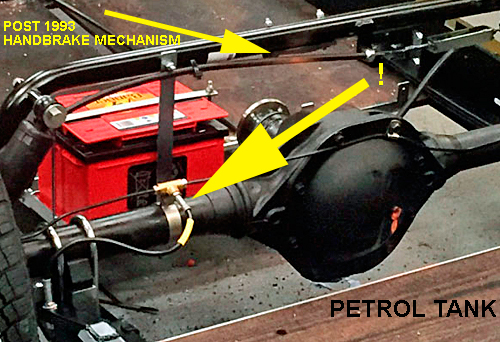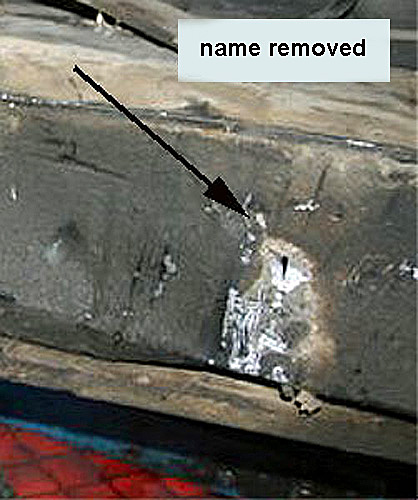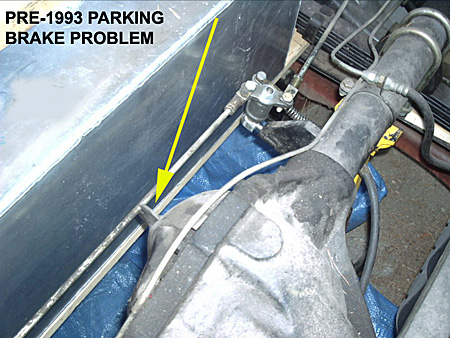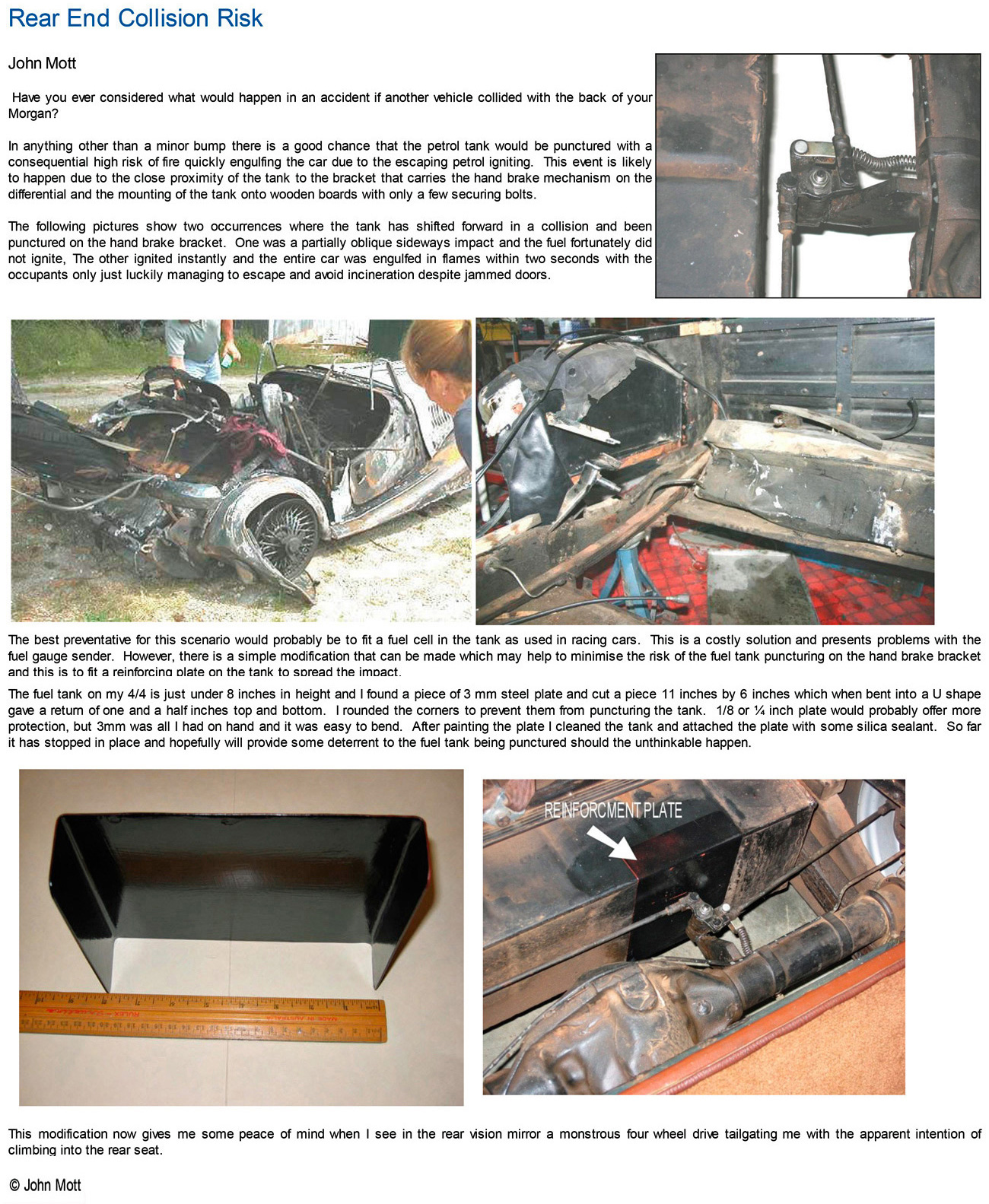
POST 1993 HOWEVER, a similar problem was created even after Bill Beck's 1993 wisdom in this area when the Steve Morris era happened in production. (I do not blame Steve..it could very well have occured without his knowledge or noticing it by those in the production department responsible for this area. Very often, in the communication between the Morgan development (aka design) department and production important elements are lost. This could likely be improved merely by explaining changes to line staff in production as Maurice Owen used to do! But enough of this old mans' rambling.) In a nutshell, the new system uses a splitter to run the brake fluid to each rear brake drum wheel cylinder. Rather than pointing this upward or towards the front of the car away from the fuel tank, they point it directly at the adjacent tank. Makes absolutely no sense, but there you have it! Perhaps it could be dangerous and perhaps not. Do not ask me to find out! See the image to the right. My solution here was merely to loosen the holding bracket and carefully angle the device upward..bending the metal brake line slightly. I figure (no guarrantees), that if the piece slams into the tank at an oblique angle, it will not pierce the tank as the old bracket did. I tightened the bracket only to the point that it will not move unless force is applied.

 4.
4.
